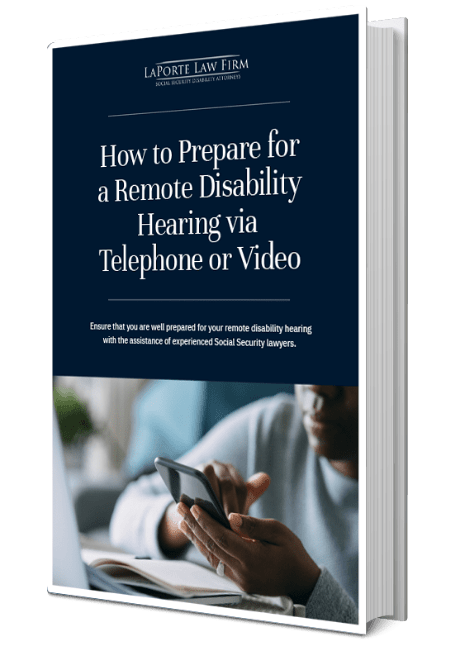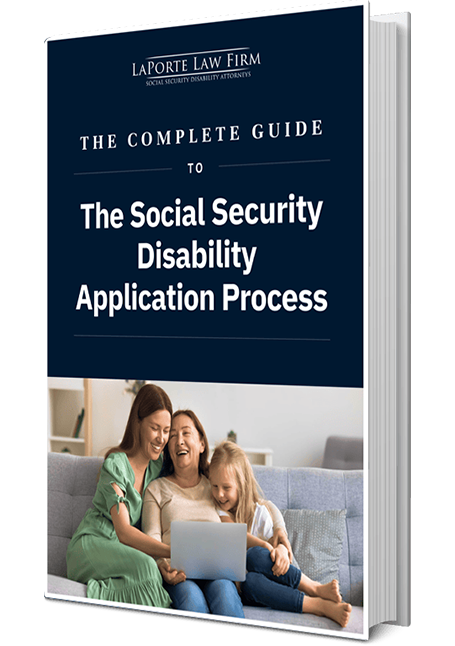
The Social Security Administration (SSA) performs a continuing disability review (CDR) on many recipients of disability benefits on a regular basis. This review is conducted to identify individuals who may no longer qualify as disabled according to the SSA’s rules. If the SSA concludes that a person’s medical condition has improved enough to regain their ability to work, or, in a child’s case, that their condition no longer meets the Medical Listing criteria, their Social Security Disability Insurance (SSDI) benefits will be stopped.
If you are being reviewed by the SSA for continuing eligibility for disability benefits, you may have many questions. For instance, how can you better understand the CDR process? How can you provide documentation of your ongoing medical conditions and symptoms? Read on to find the answers to these questions and gain a better understanding of CDRs.
Understanding continuing disability reviews
Continuing disability reviews are medical evaluations conducted to determine the current status of an individual’s disability — that is, they are conducted to verify whether a person or child still qualifies for SSDI benefits. CDRs occur periodically based on the expected improvement of the individual’s condition. By undergoing these evaluations, the Social Security Administration can ensure that the benefits system remains accurate and fair.
If your condition has improved significantly, the SSA may discontinue your benefits, but this just means the system is working as intended. The CDR process, after all, aims to help maintain accuracy and integrity in the SSDI benefits system. Therefore, it’s important to you stay informed and up to date on the CDR process to ensure your benefits are protected.
What to Expect During a CDR
During a continuing disability review, the SSA will thoroughly evaluate your medical condition and its impact on your ability to work. This process involves the following steps:
1. Initial notification
You will receive a written notification of a CDR from the Social Security Administration by mail. This notice will inform you that your case is up for review, and it’s vital that you respond to it promptly. It also includes information about the review process and the importance of providing up-to-date medical and personal information.
2. Collection of informationThe SSA collects necessary information from the claimant.
They will send you a questionnaire to complete. Form SSA-454-BK asks about your medical condition, treatment, and any improvements in your health. Taking the time to provide accurate and detailed answers in this form can make all the difference in securing the support you need.
3. Medical records review
A team of disability examiners and medical consultants carefully assesses your medical records from all doctors and hospitals you have visited since your last review or approval. They do this to determine if the beneficiary’s health condition has improved or if they can now work and are no longer eligible for disability benefits.
Ensuring that your records are up to date and accurately reflect your current medical status can greatly impact your continued eligibility for benefits. So, it is important that you take the time to gather all your medical documents and ensure that they are complete and organized for a thorough review by the SSA evaluators.
4. Consultative examination
Having complete and accurate medical records is crucial when going through the CDR process. However, if your records are insufficient, the SSA evaluators may ask you to undergo a consultative examination (CE) with a doctor of their choice. This is an important step to ensure your medical condition is adequately evaluated and your CDR disability claim is processed fairly. Therefore, you should comply with the request for a CE if it is made.
5. Work review
It is important to keep in mind that the SSA will be taking a closer look at your work history, or work attempts, since your last review. You must keep track of any work activity that may impact your ongoing eligibility. The SSA will assess if your work efforts suggest improvement in your medical condition.
6. Decision
After carefully examining all the medical information in your file, the Social Security Administration will evaluate your case and decide based on their analysis and review of the records and reports provided. The decision is communicated to the beneficiary through a written notice.
If the SSA determines that you’re still eligible for benefits, your disability status is maintained. On the other hand, if the SSA determines that your medical condition has improved to the point where you can work, they may decide to terminate your benefits. In such a case, an appeals process exists in order to pursue an in depth review of the case by an adjudicative team. The appeals process includes a request for reconsideration by a hearing officer (HO), a request for hearing by an administrative law judge (ALJ), a request for review by the appeals council, and if necessary, a civil court lawsuit.
7. Appeals process
If you disagree with the SSA’s decision that your condition has improved, you have the right to appeal their determination. Navigating the process can be daunting, but it’s important to remember that you have options.
The appeals process involves several steps, starting with a reconsideration involving an informal hearing with a Disability Hearing Officer (HO) of the Disability Determination Services (DDS) office reviewing the case. During the reconsideration stage of the appeals process, the SSA will conduct a review by a hearing officer, who was not involved in the initial decision. This appeal requires using forms SSA-561, SSA-827, and SSA-3441. This review hearing by an HO can be performed in person, through video teleconferencing (VTC), or telephone (in some circumstances) with the individual seeking review, their appointed representative (if applicable), and any witnesses. All disability hearings within the DDS are handled by the Disability Hearing Unit (DHU).
If the HO denies the initial request for review, you can then file a formal request for a hearing with the administrative law judge of the Social Security Administration. To file this appeal, you will need forms HA-501, SSA-827, and SSA-3441.
If the ALJ denies the review, you can file a request for review of the ALJ’s decision with the appeals council by filing an appeal using Form HA-520.
Finally, if the appeals council denies a case, a federal court review can follow. If you want to file a civil suit in a Federal district court, you need to file this request with the district court of the United States for the judicial district where you reside.
With patience and determination, you can work through the process to pursue the justice you deserve. You do not have to go through this alone. Seeking legal advice and obtaining representation can make all the difference. It is vital to take action immediately because getting appropriate legal counsel to navigate the process can improve your outcome.
8. Receiving continued benefits during the appeal
By filing an appeal within 10 days of an adverse CDR decision, you can ensure that you continue to receive your benefits while the appeal is being processed. This can provide you with the financial support you need during a challenging time, so don’t hesitate to take action to protect your rights. Remember, time is of the essence, so act quickly to secure your benefits and future well-being.
Frequency of CDRs
The frequency of continuing disability reviews is determined by the nature and severity of the beneficiary’s health condition. The SSA conducts periodic reviews for individuals with impairments that are expected to improve. These reviews are scheduled at 6–18 months after the most recent determination or decision that the individual is disabled or that disability is continuing.
The SSA classifies cases into three categories: medical improvement expected, possible, or not expected. For individuals whose impairment may improve but cannot be predicted within a given period, their review is scheduled at least once every three years or every five to seven years if the condition is not expected to improve. This review process applies not only to individuals with impairments that are expected to improve sufficiently to enable them to engage in substantial gainful activity (SGA) but also to children under Title XVI (SSI) whose impairments are expected to improve to the extent that they no longer meet or equal a medical listing.
How to Prepare for a Successful Continuing Disability Review
Navigating a continuing disability review may seem daunting, but with the right approach, you can ensure a successful outcome. By understanding what the SSA is looking for and ensuring you have all the documentation required, you can increase your chances of passing your CDR and maintaining your disability benefits.
Here are some tips to help you prepare for your CDR:
• Gather all relevant medical records and reports available
Maintaining a comprehensive medical treatment history is crucial to establish evidence of your ongoing disability. To achieve this, keep track of all your medical appointments, treatment procedures, and hospitalizations since your last review. Such detailed documentation will not only help you better understand your medical condition but also enable you to present a more compelling case for your disability claim. So, take charge of your health and record your medical history starting today.
• Consult with your treating physician
Having your doctor’s opinion and supporting documentation ready for your CDR is crucial for a successful outcome. Make sure to inform your doctor about the upcoming review and emphasize the importance of their input. Their professional insight can make a significant difference in determining your disability status.
• Understand the CDR forms
You can ensure a smooth-sailing process and avoid complications by correctly and accurately filling out the CDR Forms SSA-455 and SSA-454. Take the time to understand the forms and their requirements, and fill them out in careful detail. Additionally, you should keep copies of any forms you complete and provide to the SSA, along with evidence of timely submission.
• Keep a record of your work activity and report it to the SSA
If you have attempted to return to work or test your ability to maintain a job, keeping accurate records of your work activity is essential. Your work history record should include your exact hours worked, earnings received, and any accommodations made due to your disability. Maintaining documentation such as pay stubs, pay records, and bank statements is crucial.
If you want to report your earnings to the SSA by mail, it is highly recommended that you use certified mail. This will ensure that your information is securely delivered to the Social Security Administration. Although it is expensive and not mandated by the SSA, you cannot put a price on the safety of your data.
If you receive both SSDI and SSI benefits, creating two copies of your wage information may be helpful. This will make it easier for Social Security staff to process your wages. Although it is optional, why not take this small step to streamline the reporting process and avoid any confusion?
However, if you cannot obtain two copies of your wage information or prefer to work with a single copy, you can write on your paystub or near the account holder’s address that you receive both SSDI and SSI benefits. This will make it easier for the SSA to process your wages.
• Stay compliant with medical treatment
Showing a consistent record of medical appointments is essential in proving that your disability is ongoing. You must attend regular doctor visits and follow the prescribed treatment to ensure your case is strong. Remember, your health is your top priority, and by demonstrating your commitment to managing your condition by following all prescribed treatments, you also increase your chances of receiving the benefits you are entitled to.
• Maintain accurate and detailed medical records
It is of utmost importance to ensure that you maintain comprehensive medical records. These records must include detailed notes from your physicians, test results, and treatment plans, as they are crucial in establishing substantial evidence to support your disability claims. Keeping your records accurate and up to date increases your chances of receiving the necessary assistance.
• Always maintain updated contact information with the SSA
To ensure a smooth and hassle-free process, you must always maintain updated information with the SSA regarding your current address and telephone number. Communication plays a pivotal role in this process, and keeping your contact information up to date will help the SSA to reach you when they need to communicate with you. So, it is helpful to take a moment to verify your details and let SSA know of any changes that may have occurred in your case since the initial determination of your disability.
Additionally, it’s crucial to report any changes in your medical condition to the SSA as soon as possible. Ignoring to report changes could result in your eligibility for benefits being lost. Remember, taking action promptly can help you continue receiving the support you need.
• Respond promptly to SSA requests
Acting with promptness when responding to the SSA’s requests is a clear demonstration of your commitment and cooperation. Your quick response not only accelerates the process but also helps avoid any unnecessary delays that could lead to your benefits being suspended.
• Be prepared for any potential medical examination
It is essential to be aware that the SSA may require you to attend a consultative examination with a doctor the SSA has approved. This may seem daunting, but it is always better to be prepared. By anticipating this possibility, you can ensure that you are ready for any eventuality and have all the information and resources you need to make the most of the consultation.
• Understand the appeals process
It is essential to know that if the SSA decides you no longer qualify for benefits, you don’t have to accept their decision. You have the right to appeal — it is your right to pursue legal action for the benefits you are entitled to.Being aware of the appeals process and ready to take necessary action can make all the difference.
Hire a disability attorney If you're dealing with a complex disability case or facing difficulties maintaining your benefits, hiring an experienced disability attorney or advocate is worth considering. With legal guidance, you can confidently navigate the CDR process and present your case in the best possible light. Moreover, legal counsel can represent you throughout the review process and ensure that your rights are protected. Don't let a challenging case hold you back — get the help you need to succeed.
FAQs
A continuing disability review is a regular review conducted by the Social Security Administration (SSA) to assess whether an individual is still eligible for benefits due to physical or mental impairments. According to the law, the SSA must conduct a CDR at least once every three years or every five to seven years if the condition is not expected to improve. The main objective of the review is to identify recipients who may no longer qualify as disabled. If the SSA determines that an individual is no longer disabled or blind, their benefits will discontinue.
CDRs are scheduled 6–18 months after the most recent determination or decision. For individuals whose impairment may improve but cannot be predicted within a given period, they are scheduled at least once every three years. This review process applies not only to individuals with impairments that are expected to improve sufficiently to enable them to engage in substantial gainful activity (SGA) but also to children under Title XVI (SSI) whose impairments are expected to improve to the extent that they no longer meet or equal a medical listing.
If the SSA decides you are no longer disabled, you will stop receiving disability benefits. However, there is no need to worry. You can prepare yourself for this situation by learning more about the CDR process, how to appeal, and what it entails. This, along with seeking legal advice, can help alleviate some of the stress and anxiety and help you prepare for the review.
The term substantial gainful activity, or SGA, essentially refers to the maximum monthly salary an individual can earn while still maintaining eligibility for disability benefits. SGA is a critical factor that the SSA considers when evaluating applications for disability benefits. You must understand and follow the guidelines for SGA to increase your chances of qualifying for the benefits you need.
The short answer is yes. If you disagree with the SSA’s decision that your condition has improved, you can appeal their determination. The process involves several steps, starting with a reconsideration stage, where a case review is conducted by an adjudicative team or designated person who was not involved in the initial decision. A hearing before an administrative law judge follows this. From there, the appeals council can review the case; if necessary, you may have the opportunity for a federal court review. Seeking legal advice to discuss your appeal options and obtaining proper representation can make all the difference.















